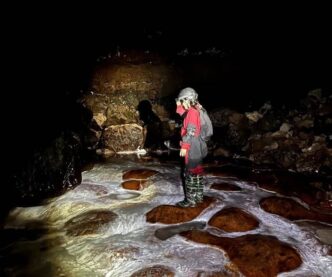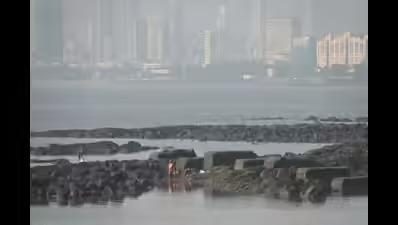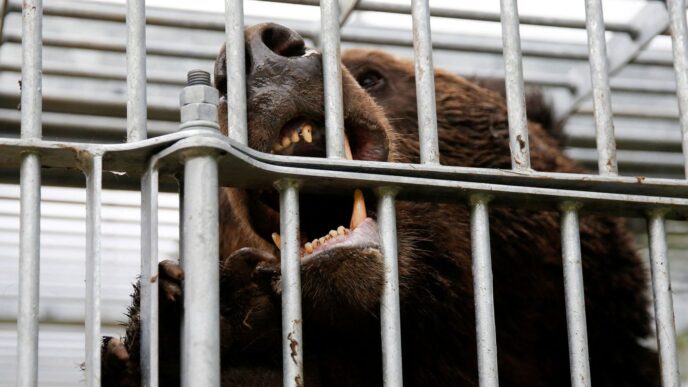
Hidden beneath Meghalaya’s rolling green hills lies another world a labyrinth of ancient caves that hold geological secrets, cultural legends, and fragile ecosystems. Today, these caves are not just tourist attractions but symbols of sustainable living and conservation, thanks to the efforts of local communities and individuals like Banyllashisha Wankhar.
A documentary filmmaker, conservationist, and cave guide, Banylla as she is fondly called has been at the forefront of promoting eco-friendly tourism in the Mawmluh region, home to one of India’s longest and most studied cave systems.
For her, caves are more than stone and silence. “I belong to the Khasi tribe of Meghalaya, a matrilineal community where lineage passes through the woman,” she says. “I was born in a village surrounded by waterfalls, cliffs, and caves landscapes that have shaped our lives and stories for generations.”
Caves: Living Stories of Culture and Survival
In Khasi folklore, caves are seen as sacred spaces homes to deities, spirits, and mythical creatures. “These stories help us understand how deeply our people respect nature,” Banylla explains. “They remind us that every natural space even one hidden beneath the earth has life and purpose.”
Beyond their cultural importance, caves like Mawmluh have long supported livelihoods. The limestone-rich region once depended heavily on mining and a nearby cement factory. “When the factory closed due to political issues, many saw it as a loss,” Banylla recalls. “But for us, it became a chance a chance to protect what truly belonged to us: our caves.”
This shift inspired the Mawmluh Allied Activities Co-operative Society, a community-driven initiative that promotes responsible tourism and safeguards the local environment.
Tourism with Limits, Nature with Respect
While tourism in Meghalaya has flourished, Banylla and her community are cautious about its impact. “Tourism can be both a blessing and a threat,” she says. “It supports livelihoods but can also destroy fragile ecosystems if not managed well.”
To strike a balance, the co-operative limits cave visits to a small number each day. “We don’t take more than 25 visitors in a day,” Banylla notes. “This helps us ensure that tourism remains sustainable and that our caves stay protected for future generations.”
By regulating visitor numbers, guiding tours responsibly, and emphasizing education, the community has created a model that other ecotourism sites in India can learn from. “Awareness and protection must go together,” she emphasizes. “That balance will make cave tourism sustainable.”
The Cave Within Me: A Journey of Discovery
Banylla’s love for caves eventually merged with her passion for storytelling. Her journey into conservation filmmaking began with the GreenHub Northeast India Fellowship, which equipped her with technical and creative skills in camera work, editing, and documentary production.
“The fellowship helped me find my voice,” she says. “It taught me patience and empathy how to observe nature and listen to people’s stories.”
Her debut film, The Cave Within Me, is both a personal and ecological exploration. “It’s not just about rocks and formations,” she explains. “It’s about what caves teach us about ourselves, about time, and about the delicate balance of life.”
The film captures the grandeur of the Mawmluh Cave, its stalactites and stalagmites resembling frozen chandeliers, and its mysterious chambers including the “Hanging Garden,” where scientists discovered geological evidence defining the Meghalayan Age, a new chapter in Earth’s history that began 4,200 years ago.
Life in the Dark: A Hidden Ecosystem
Inside the caves, Banylla has documented an entire world adapted to darkness. “Every time I enter, I encounter life that survives without light,” she says with awe.
Her observations include bats, cave crickets, spiders, shrimp, ornamental fish, and even cascade frogs (Amolops). She describes her most thrilling moment discovering cave worms that hang from thin threads, glowing faintly in the dimness. “At first, I thought they were spider webs,” she laughs. “But after watching closely, I realized they were alive.”
She also talks about a rare plant known locally as Soh Lwa, which occasionally sprouts inside the cave. “It grows only when water carries the fruit inside. But once the monsoon floods return, the plant disappears. It’s like nature’s seasonal visitor a reminder of how interconnected life is, even underground.”
Caves as Teachers
For Banylla, the caves have become more than research sites they are mirrors of self-discovery. “Every step beneath the surface teaches me something,” she reflects. “Like caves, we all have hidden parts dark, mysterious, and full of lessons.”
Guiding tourists and documenting cave life have shaped her values of patience, respect, and awareness. “Caving is not only about adventure,” she says. “It’s about understanding how fragile and unique these ecosystems are.”
Through her work, she hopes to inspire others to see caves not as thrill-seeking destinations, but as ecosystems worth protecting living archives of nature and time.
A Community Vision for the Future
Meghalaya’s caves including Mawmluh, Mawsmai, and Siju attract thousands of visitors each year. But it is initiatives like Banylla’s that are setting the tone for a new kind of tourism community-led, conservation-focused, and deeply rooted in local culture.
“The caves are our teachers and storytellers,” she says. “Through them, we learn how to live with respect for nature, for culture, and for ourselves.”
Her documentary, The Cave Within Me, stands as both a tribute and a message: that true exploration begins not with a flashlight, but with awareness.
Interview with Banyllashisha Wankhar
Original article written- By Saumitra Shinde
Link to the article: https://india.mongabay.com/2025/10/conserving-caves-through-ecotourism-in-meghalaya-interview/

















